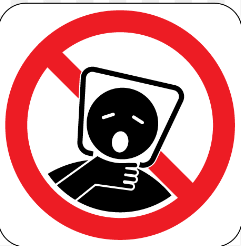
Suffocation Hazards
Suffocation hazards represent a serious and often overlooked danger, particularly for infants and young children. Understanding these risks is crucial for parents, caregivers, and individuals of all ages to prevent tragic accidents and ensure a safe environment.
Suffocation occurs when the oxygen supply to the body is cut off, leading to rapid loss of consciousness and, if not quickly addressed, death. The most common suffocation hazards are often found in everyday items and situations that many might not immediately recognize as dangerous.
For infants, one of the primary suffocation risks comes from unsafe sleeping environments. Soft bedding, pillows, blankets, and stuffed animals in a crib can pose significant dangers. The American Academy of Pediatrics recommends a bare crib with a firm mattress and fitted sheet for infants, emphasizing the “Back to Sleep” campaign, which advises placing babies on their backs to sleep to reduce the risk of Sudden Infant Death Syndrome (SIDS) and suffocation.
Plastic bags are another major suffocation hazard, particularly for young children. Their thin, pliable nature can easily conform to the face and mouth, blocking air intake. It’s crucial to keep plastic bags, including dry cleaning bags, out of reach of children and to properly dispose of them.
Small objects pose a dual threat of choking and suffocation. Items like coins, small toys, and certain foods can block the airway if inhaled or swallowed. Parents and caregivers should be vigilant about keeping small objects away from young children and should familiarize themselves with age-appropriate toys and foods.
In the home, seemingly harmless items like refrigerators and old trunks can become deadly traps. Children playing hide-and-seek might climb into these spaces and become trapped, leading to suffocation. It’s important to secure or dispose of old appliances properly and to teach children about these dangers.
Car trunks are another potential suffocation hazard. Modern vehicles are equipped with internal trunk releases, but older models may not have this safety feature. Children should be taught never to play in or around vehicles.
For adults, suffocation hazards can arise in various situations, including workplace environments. Confined spaces, such as tanks, silos, and manholes, can have low oxygen levels or contain harmful gases, leading to rapid suffocation. Proper training and safety equipment are essential for workers in these environments.
Awareness and prevention are key in mitigating suffocation risks. This includes educating family members, implementing safety measures in homes and workplaces, and staying informed about product recalls related to suffocation hazards.
In case of a suffocation emergency, quick action is critical. Knowledge of basic first aid, including CPR, can be lifesaving. It’s advisable for parents, caregivers, and individuals in high-risk professions to receive proper training in emergency response techniques.
By understanding and actively addressing suffocation hazards, we can create safer environments for children and adults alike, potentially saving lives through vigilance and preparedness.




